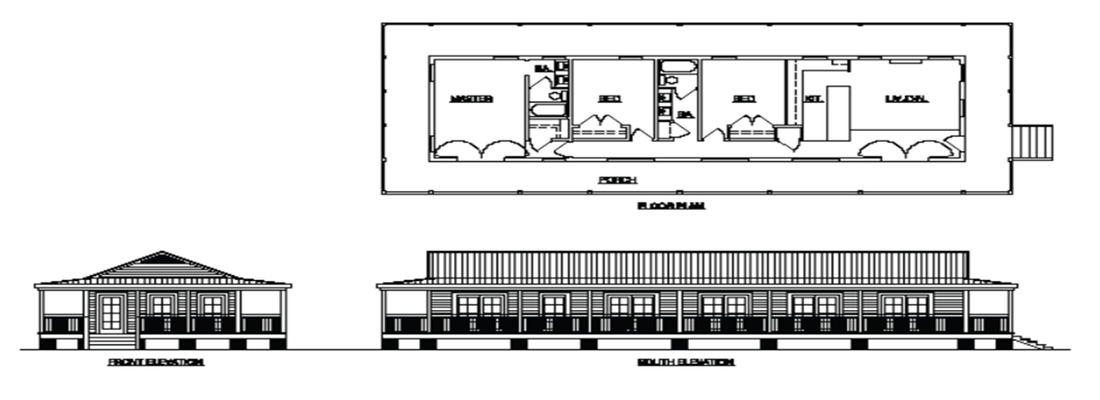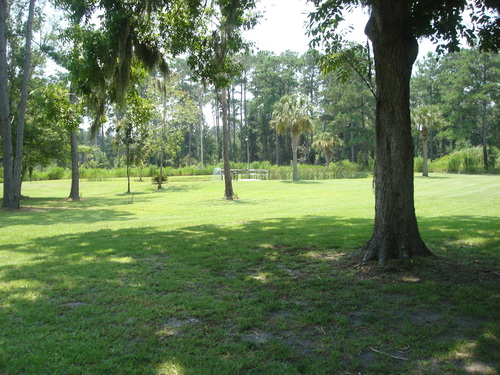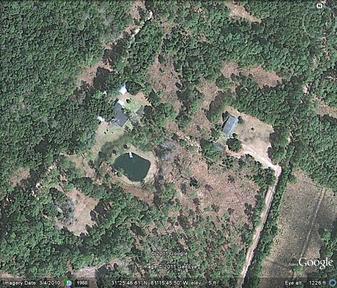Inspired by the Bilali & Phoebe Muhammad Family
7 Sisters Cottages
a Gullah/Geechee Educational Experience Center
...with your help will be nestled in the Hogg Hummock Historic District on Sapelo Island, Georgia.
...with your help will be nestled in the Hogg Hummock Historic District on Sapelo Island, Georgia.
Architect: Steven Gaynair, Towns and Architecture©
Quick History Lesson & Synopsis about Bilali Muhammad according to http://en.wikipedia.org/wiki/Bilali_Document.
Bilali Mohammed was enslaved on Sapelo Island, Georgia. According to the history of Sapelo Island written by Bilali descendent Cornelia Bailey ("God, Dr. Buzzard and The Bolito Man"), Bilali was from Sierra Leone, and was a master cultivator of rice, a skill prized by Georgia slave owners. Willian Brown Hodgson (1857) and other scholars that met Bilali claim he was born in Timbo, Guinea, around 1770 to a well-educated African Muslim family. He was enslaved as a teenager and was held as a slave for ten years in the Middle Caicos plantation of Dr. Bell, a Loyalist refugee from the American Revolutionary War, before he arrived in Georgia in 1802. In Georgia he became the head driver on Thomas Spalding's Sapelo Island based plantation. Bilali could speak Arabic and had Knowledge of the Qur'an. In the War of 1812, Bilali and his fellow Muslims helped to defend America from a British attack. Upon Bilali's death in 1857, it was discovered that he had written a thirteen-page Arabic manuscript. At first, this was thought to have been his diary, but closer inspection revealed that the manuscript was a transcription of a Muslim legal treatise and part of West Africa's Muslim curriculum.
The Bilali Muhammad Document is also known as the Ben Ali Diary or Ben Ali Journal. On close analysis, the text proves to be a brief statement of Islamic beliefs and the rules for ablution, morning prayer, and the calls to prayer. It could, justifiably, be called the "Mother Text" of American Islamic Literature according to Muhammad al-Ahari due to it being the first Islamic text written in the United States. When it was translated, it was found that it had nothing of an autobiographic nature. A comprehensive commentary with citations from traditional Islamic texts and American Islamic texts with related subject areas is under preparation by Muhammad al-Ahari, national secretary of the Noble Order of Moorish Sufis and long-time researcher on American Islamic History and Literature. The concept of a Matn (source text) with several extended commentaries is a traditional genre in Islamic literature. The commentaries may be linguistic, spiritual, and even have the function of relating the text to similar works. Further research on Bilali's life and his influence upon both American Islamic literature and to the Gullah dialect of English needs to be carried out in order to present a complete picture of this unique American Muslim author.
The Bilali Muhammad Document is also known as the Ben Ali Diary or Ben Ali Journal. On close analysis, the text proves to be a brief statement of Islamic beliefs and the rules for ablution, morning prayer, and the calls to prayer. It could, justifiably, be called the "Mother Text" of American Islamic Literature according to Muhammad al-Ahari due to it being the first Islamic text written in the United States. When it was translated, it was found that it had nothing of an autobiographic nature. A comprehensive commentary with citations from traditional Islamic texts and American Islamic texts with related subject areas is under preparation by Muhammad al-Ahari, national secretary of the Noble Order of Moorish Sufis and long-time researcher on American Islamic History and Literature. The concept of a Matn (source text) with several extended commentaries is a traditional genre in Islamic literature. The commentaries may be linguistic, spiritual, and even have the function of relating the text to similar works. Further research on Bilali's life and his influence upon both American Islamic literature and to the Gullah dialect of English needs to be carried out in order to present a complete picture of this unique American Muslim author.
|
|
7 Sisters Cottages Construction Concept Historical BackgroundDuring the trans-Atlantic slave trade institution of enslavement, a "head-slave" was utilized to oversee the plantation operations. This individual was typically of African descent and of the Islamic faith.
|
Cultural Development Initiative Site No. 1 of 2
LEED Platinum Certification
|
Federally Executed Settlement Agreement for the Gola Kizzi on Sapelo Island
| ||||||




